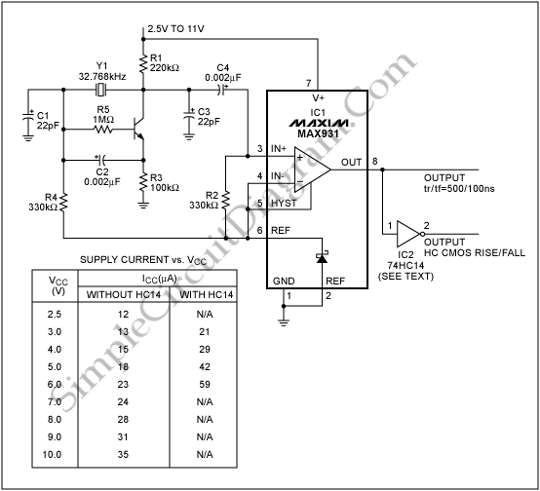Wide Supply Range 32 kHz Oscillator
To generate a system clock or auxiliary sleep clock in microcontrollers (µCs) and low-power instruments we usually use A 32kHz oscillator. A CMOS inverter (74HC04 or CD4049UB type) biased as a linear amplifier by connecting a large-valued resistor from the input to the output is one of usual implementation.
The inverter circuits give us problems. To attain Supply currents fluctuate widely over a 3V to 6V supply range, and currents below 250µA is difficult. For wide variations in supply voltage,the operation can be unreliable. Further, the inverter’s input characteristics can vary widely and they are not guaranteed. To solves this problems we can use A very low-power crystal oscillator. this oscillators only uses 13µA from a 3V supply, it is comprise with a low-power comparator/reference device (IC1) and a single-transistor amplifier/oscillator (Q1). Q1’s base is biased at 1.25V via R4, R5, and the reference in IC1. VBE is about 0.7V, placing the emitter at approximately 0.5V. The amplifier’s nominal gain (R1/R2) is approximately 2V/V.

This circuit starts quicker and more reliable at any supply voltage than inverter-based oscillators. This circuit is made from components with a value that is not critical. We can replace Q1 with any small-signal transistor which has decent beta of 100 or so at 5µA. The maximum supply currents that is allowed for IC1 is nearly flat over the 2.5V to 11V supply range.